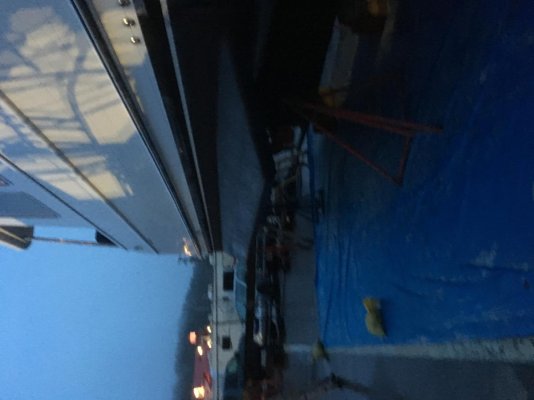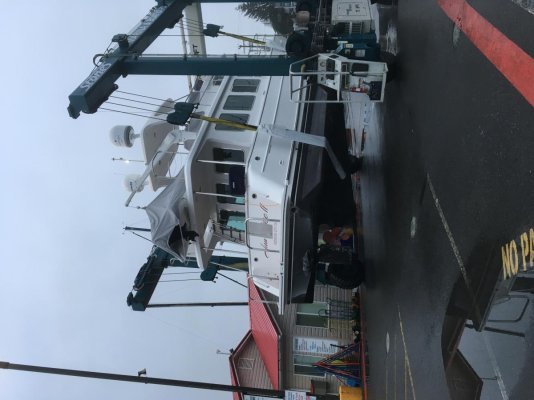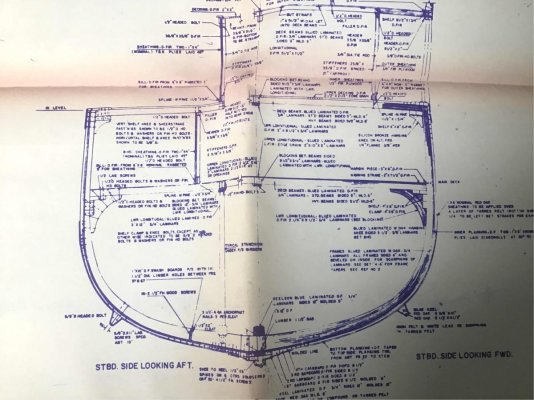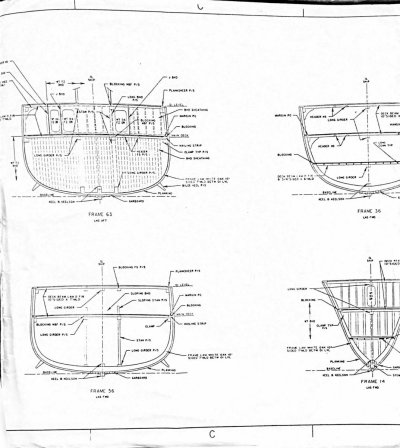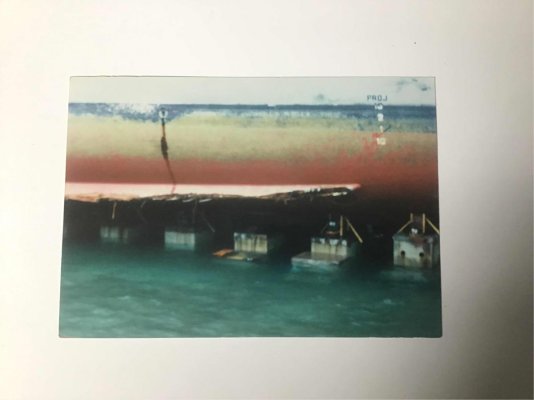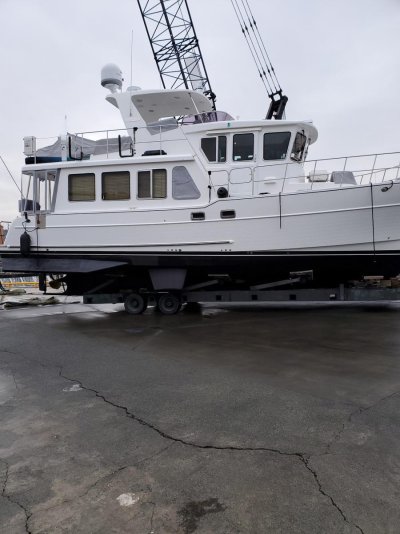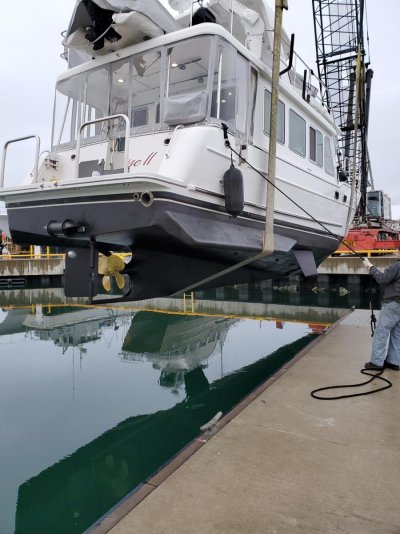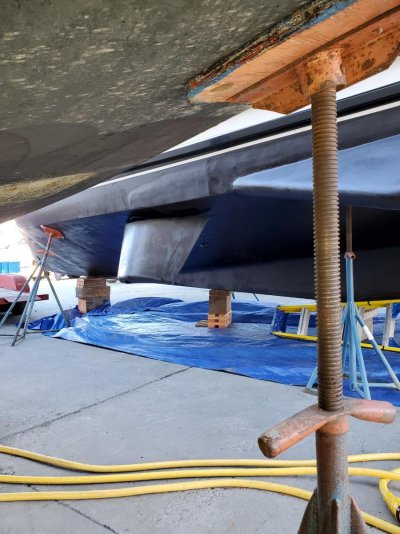dirtdoc1
Senior Member
- Joined
- Apr 12, 2016
- Messages
- 472
- Location
- United States
- Vessel Name
- Ann-Elyse II
- Vessel Make
- North Pacific 45
I’ve read, somewhere in the distant past, that it’s not just pressure on the bilge keel / rolling chock that dampens roll, but also turbulence on the “non pressure” side comes into play as well.
I'd love to know of the mechanics that take place. I find it very interesting that my bilge keels took away some docking maneuverability. I used to be able to spin the boat around by going forward and backward. Let's say you are sideways to your slip. I would turn the wheel over hard while still gliding forward until it stopped turning. Then (while leaving the wheel hard over) put it in reverse. The boat would keep turning in the same direction until it stopped turning then put the throttle forward to keep it turning. By throttling back and forth the boat would keep turning in place. Once the bilge keels were installed the boat was not as responsive to that same procedure.
Very strange. Trevor (the owner of North Pacific Yachts) noticed it too.
Cheers!


